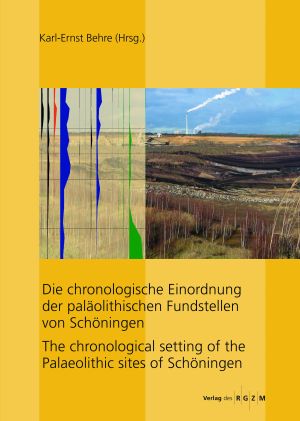Serangeli, Jordi
The Homotherium Finds from Schöningen 13II-4: Man and Big Cats of the Ice Age. Contributions of the scientific workshop at the paläon (Schöningen) from 05.06 to 07.06.2015
Säbelzahnkatzen und andere große Raubkatzen sind für viele Menschen das Sinnbild eines gefährlichen Raubtiers. Nach der Entdeckung der ältesten Holzwaffen der Menschheit sind in der etwa 300 000 Jahre alten Fundstelle von Schöningen 2012 erstmalig auch die Überreste der europäischen Säbelzahnkatze (Homotherium latidens) entdeckt, dokumentiert und ausgegraben worden. In Folge dieser Entdeckung wurde in Schöningen 2015 ein zweitägiger wissenschaftlicher Workshop mit dem Titel »The Homotherium finds from Schöningen 13II-4 and big cats of the Ice Age« abgehalten. Dieser Band basiert auf den Vorträgen und gibt einen Überblick über ein für die Entwicklung des Menschen entscheidendes Thema – unser Zusammenleben mit großen Raubkatzen. Ziel ist es, die vielfältigen Themen vom fossilen Beleg der europäischen Säbelzahnkatze, der Frage ihres Aussterbens, aktualistische Vergleiche zu heutigen Raubkatzen und die Rezeption und Beziehung von Menschen zu Raubkatzen zu thematisieren.
Die chronologische Einordnung der paläolithischen Fundstellen von Schöningen
Die Aufdeckung eines Jagdlagers im Braunkohlen-Tagebau von Schöningen mit den ältesten Speeren der Welt hat sowohl in der Wissenschaft als auch in der breiten Öffentlichkeit eine große Resonanz gefunden. Daneben stellt die Grube ein Fenster in die Vergangenheit dar, das über mehrere Hunderttausend Jahre den geologischen Ablauf und die Umweltgeschichte aufzeigt.
Die riesigen geologischen Aufschlüsse und die archäologischen Ausgrabungen haben Schöningen zu einem Schlüsselgebiet für die gesamte mitteleuropäische Eiszeitalterforschung gemacht. In dem ersten Band der neuen Reihe zu diesem Fundplatz werden in sieben Beiträgen die Untersuchungsergebnisse der beteiligten Disziplinen zum zeitlichen Ablauf des Mittelpleistozäns vorgelegt. Vier weitere Beiträge stellen die Ergebnisse aus Schöningen in den größeren Kontext Mitteleuropas, für dessen zeitliche Gliederung sie große Bedeutung haben.
Die Geologie der paläolithischen Fundstellen von Schöningen
Der Tagebau von Schöningen bot über 30 Jahre lang ausgezeichnete Einblicke in die Geologie des Eiszeitalters in Niedersachsen. Insbesondere die Ablagerungen der letzten 400000 Jahre (Mittel- und Jungpleistozän) waren immer wieder durch Profile im Tagebaubetrieb aufgeschlossen.
Es ist das Verdienst von Dietrich Mania, diese einmaligen Archive mit Unterstützung von Hartmut Thieme systematisch dokumentiert zu haben. Mit dem zweiten Band der Schöningen-Reihe wird diese Grundlagenarbeit umfassend vorgelegt. Zugleich geben Jörg Lang, Jutta Winsemann und andere einen Überblick über die Ergebnisse ihrer seit 2009 durchgeführten geowissenschaftlichen Studien. Die Beiträge bieten ein umfassendes Bild zur Schöninger Schichtenfolge und der Entstehung des Sees, an dessen Ufer Pferdejäger ihre Beute zerlegten. Schließlich ist die Untersuchung von Gottfried Böhme zu den ausgezeichnet erhaltenen Fisch- und Amphibienresten aus den Verlandungsfolgen 1-4 ein wesentlicher Baustein zur Charakterisierung der klimatischen Bedingungen der Zeit vor 300000 Jahren.









